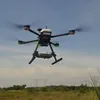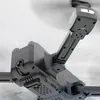Compact long-range eplanes could be the future of mobility
In an interview with YourStory, professor Satyanarayanan Chakravarthy, co-founder of The ePlane Company talks about electric planes, drone regulations affecting the sector, his journey from professor to entrepreneur and more
Across the world, companies are working on building electric planes or flying taxis, either to carry goods or passengers.
In India, Ubifly Technologies Private Limited, better known as (TEC), is at the forefront of this sector. The company was founded in 2016 by Pranjal Mehta and Satyanarayanan Chakravarthy to provide aerial delivery services.
A hybrid of drone and electric airplane technology, the startup is focused on building electric planes and unmanned aerial vehicles (UAV) for short-range intracity travels and is aimed at redefining urban mobility.
The startup has three prototypes – e6 or the tabletop, e50 – the mid-sized, and e200 – the full-sized airplane. The tabletop (drone) is 1.7 metres long and can carry up to six kilograms. The company plans to go to market with this variant by the beginning of next year.
The mid-sized drone is three metres long and can carry up to 50 kilograms whereas the full-scale is five meters long and can carry up to 200 kilograms and would be the air taxi product.
The startup was ideated by the National Centre for Combustion Research & Development Lab (NCCRD).
Professor Satyanarayanan has been teaching Aerospace Engineering at IIT Madras since 1998. He is also the head of the National Centre for Combustion Research & Development Lab (NCCRD) and the Centre of Propulsion Technology at IIT Madras.
His study on propulsion was one of the reasons that led to the launch of TEC. On the other hand, Pranjal, an alumnus of IIT Madras, was previously involved in building short-distance daily flying vehicles.
It raised $5 million in Pre-Series A round of funding led by Speciale Invest and Micelio in January this year.
YourStory (YS) spoke to professor Satyanarayanan (SC) about the startup’s journey and the road ahead for electric planes.
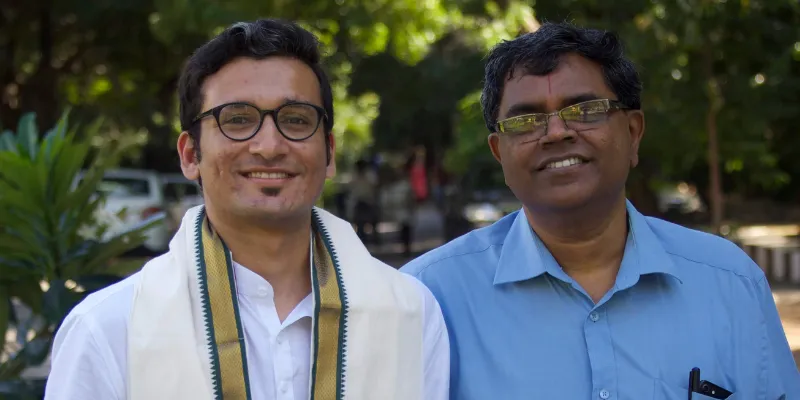
The ePlane Company founders: Pranjal Mehta (left) and Prof Satya Chakravarthy
Edited excerpts:
YS: What is The ePlane Company’s USP?
SC: Our USP for Eplanes are slow flying compact long-range aircraft. This particular combination will allow us to access lots of rooftops and front yards so that you can start off from where you are and go to your destination.
If you're any bigger than that, you will need a separate launch pad, a ground transportation means from one location to another launch pad after which you will get to your actual destination. That kind of a three-legged journey is going to only halve your travel time, not make it like 1/5 or 1/10 at an affordable cost.
So that is conceptualisation of the use case based on which we worked on the technology required to develop this compact slow-flying long-range vehicle.
YS: What is The ePlane Company working on?
SC: We are right now building a 2-seater with a human pilot, with the thesis that two-thirds of today's taxi rides are single-passenger rides. This is our primary target.
As this goes to market, two things will happen. One, we will start working on a five-seater, like a regular ground taxi, and still be the most compact aircraft of that class in the world.
Second, we will aim for autonomously piloted flights. The latter may take longer, but there is a possibility of getting to it by the end of the decade. This is roughly the future plan at ePlane.
YS: You have been an aeronautical professor for 23 years at IIT Madras. What made you become an entrepreneur?
SC: Entrepreneurship is something that requires passion. So, you need to feel passionate about starting up on your own.
We had startups that were working in my combustion centre such as Agnikul, GalaxyEye.
One of my colleagues had also started a company for extra fuels. I have been associated with each of them in an advisory founder kind of capacity.
Along with this, I began evangelising deep tech, starting up around with all these rockets and engines and so on. This brought a need in me to plunge into one startup from ideation to market and go through the entire course myself as an intense journey before I sound more authentic and evangelise the deeptech entrepreneurship, and that's where I found The ePlane Company.
YS: How has your experience as an academician helped you build a company?
SC: I have had the opportunity to establish the world's largest Combustion Research Center, handle a lot of money and do things at scale and work with industry very closely.
This in itself is a somewhat different level as an academician when compared to the norm where people just do some research published papers. This allowed me to improve my managerial skill.
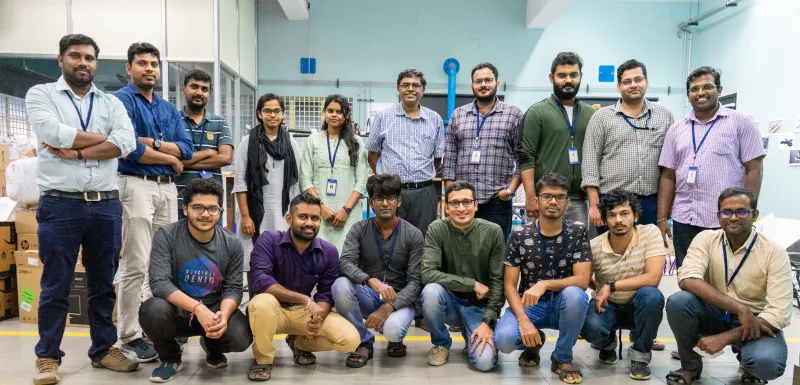
The ePlane Company Team
YS: What has changed after the drone regulations in India? What about air taxi regulations?
SC: To give some context, what classifies as drones are a small plane that can take off vertically and carry a small payload like about two to six kilograms. In 2019, when we were doing this, there were no drone laws that were actually permitting this to happen.
Commercialisation of drones was not considered acceptable [before the regulations].
[as the regulations] were in the works, I think around 2019, they [ government] started doing some, what's called, beyond visual line of sight experiments and few more.
Until the regulations came in, we were allowed to test our prototype in research establishments, R&D establishments, academic institutions, we could fly, but outside of that, it was not allowed. In other terms, we could just do very restricted testing and so on.
hen the regulations came in, the default red zones all across the country were changed to green with only a few red zones and yellow zones. So red zones, you cannot fly and yellow zones are that you need permission to fly green zones you can update. This is the law that we have.
This change would enable a lot of drone activities, solving one part of the hindrance. And what we need now is of course, the yellow zones as they have some economic benefits, or economic interest we have to await the implementation of the permissions.
The infrastructure required for getting the permissions is not yet there. This is something that the government has been working on, the digital sky platfrom where one needs to apply for permission to fly over the yellow zones. But we now have lots of green zones to work in where we can do trials, paid and commercial pilots.
As for the passenger taxi segment, we can actually start whenever our aircraft is ready and is certified. And use it like a helicopter.
The only thing that we need is for regulators to acknowledge an electric aircraft should be considered equivalent or better than (a helicopter) and we need the regulatory body to recognise it as something better than a helicopter so that it can land and take off from elevated platforms.
But even otherwise, it should be possible for us to actually use these landing sites like helicopters and operate in what's called the VFR i.e visual flight rules where the pilot has visibility of the landing spot.
For now, we can adopt the current framework available to launch air taxis. There will be issues when we see large number of aircraft travelling across the city.
This will increase the pressure on Air Traffic Control (ATC). Therefore, once we start having air taxis, we might end up seeing two planes passing when we look up.
In such a situation, the flight path authorisation would be done by giving two different altitudes at which they will go with a vertical clearance according to the mandates. So all of this stuff should be in place and to manage the pressure on the air traffic, we would need automated ATC.
YS: Did you have difficulty raising funds before the drone regulations?
SC: We moved away from drones as far as investment is concerned. As India did not have drone regulations, the investors were flagging [the fact that there were no regulations] so we decided to raise investments for air taxis.
We have a prototype for drones and we can commercialise it now. But on the investment front, we are not seeking for drones but for passenger side of things. Investors are open to investing here as initial commercial operations can be done with existing helicopter rules.
With the helicopter regulations, we will essentially pass off as the minimum. Investors care mainly about whether the necessary regulations exist. But still, there are some exceptions in the market.
For instance, Agnikul [a space tech startip] raised two rounds of investment without any regulations on whether private rockets can be launched in the country. Whereas for drones attract fewer investors since the market isn’t large.
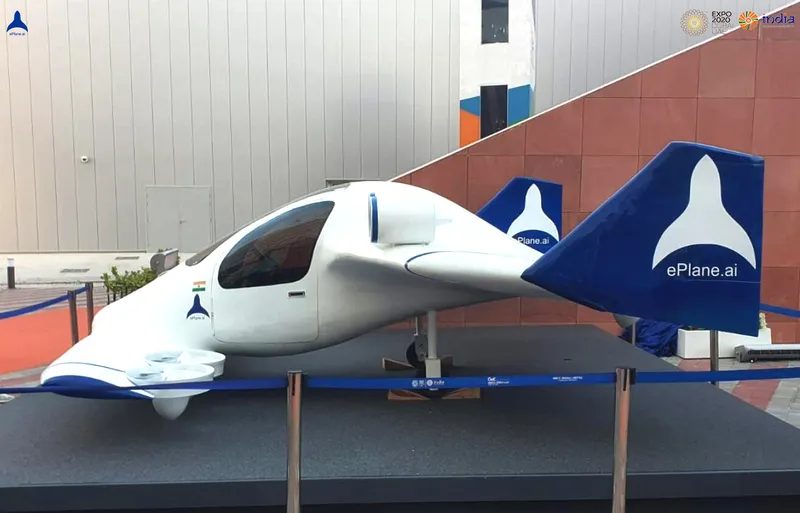
ePlane in Dubai Expo
YS: What are the procedures for an air taxi before it can get commercialised?
SC: Before a product can be commercialised, there are three stages -- prototyping, certification, and commercialisation.
We are in the prototyping stage right now. So we are expecting to put out our sub-scale (mid-sized) prototype sometime in June - July and the full-scale prototype in September- October. We will then go to the multiple prototypes so that we can clock hours for the certification process.
During prototyping, multiple prototypes get developed. One after the other, they clock hours on each of those prototypes cumulatively during the certification, to check if we meet the mandates and the requirements. This is a two-year process, sometimes three. We have initiated our certification process and sometime in 2024, we expect to get certified after which we can get into the commercialisation phase.
At some point, we will have our flight test that is the first step in prototype testing in September, or October. Until then, they will go through all the design reviews, while the prototyping is happening. So once the prototypes arrive, we will get into the certification stage.
Our target is a minimum of five prototypes through the middle of 2023. Prototyping is also aimed towards establishing production processes on a smaller scale first before launching even limited production.
On the Pilot certification front, we do not expect much changes to pilot certification. However, the call will be with the regulatory body. We have to work with them on it. We will be developing simulators first with the help of partners who do that, and then push aircraft from limited production for pilot training next.
YS: What are some use cases for air taxis?
SC: I believe our clients would be B2B2C (business-to-business-to-consumer). So we may not directly deal with the end users but we will probably partner with somebody who will operate the planes so from that perspective, the partner is actually going to be my customer.
Our ePlanes can commute a distance of 200 kilometres on a single charge. So some of the usage we see is in medical, corporate, and tourism to name a few.
Edited by Affirunisa Kankudti



